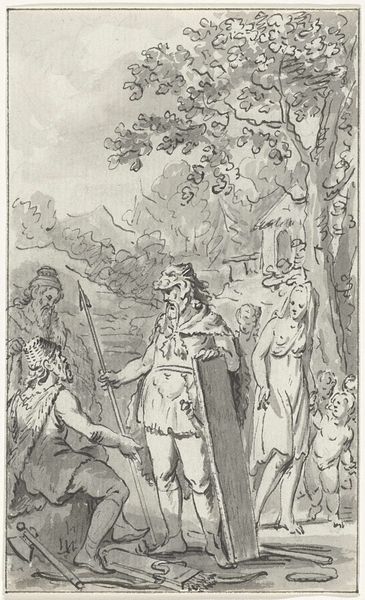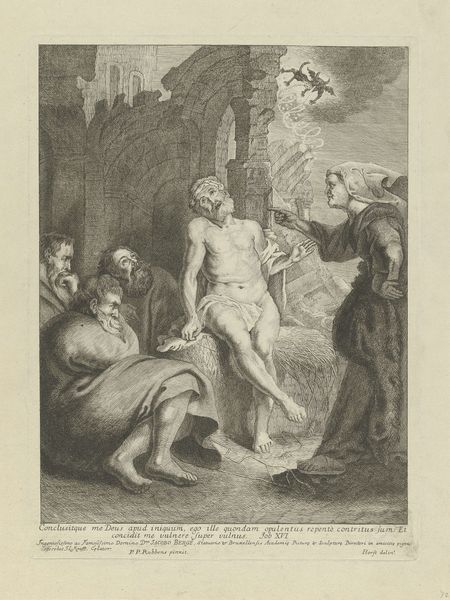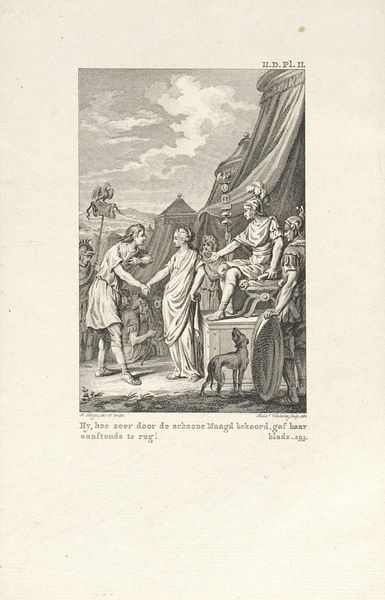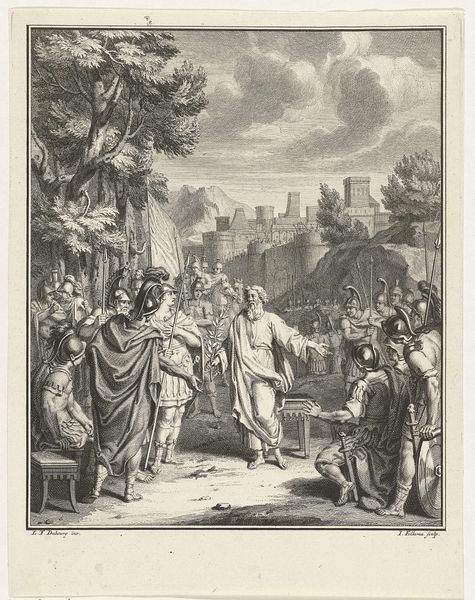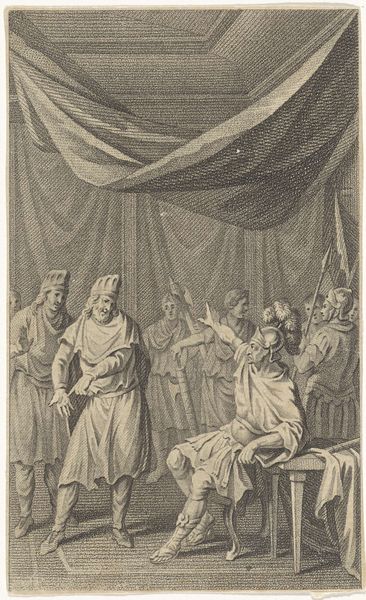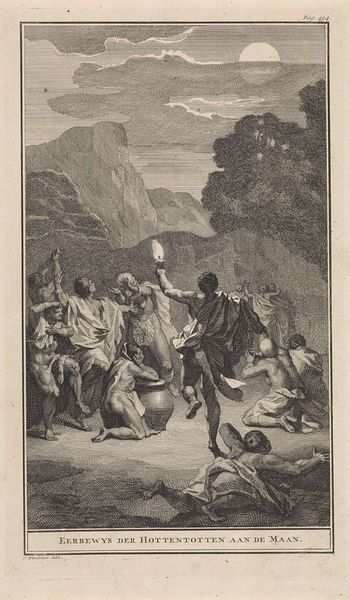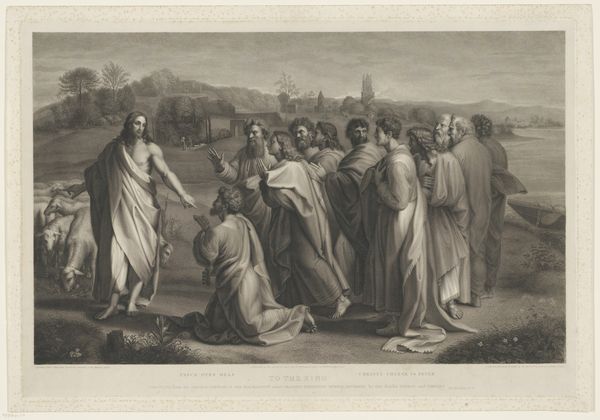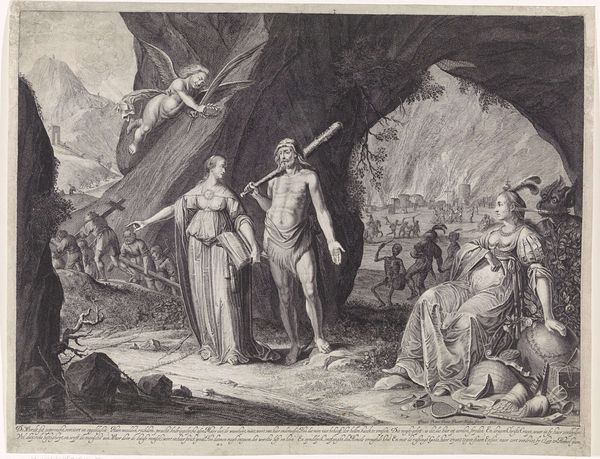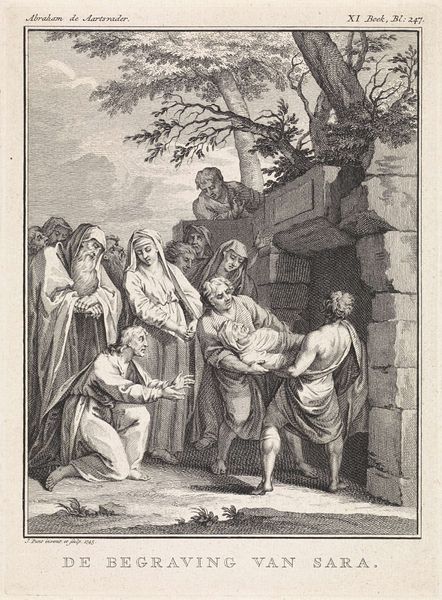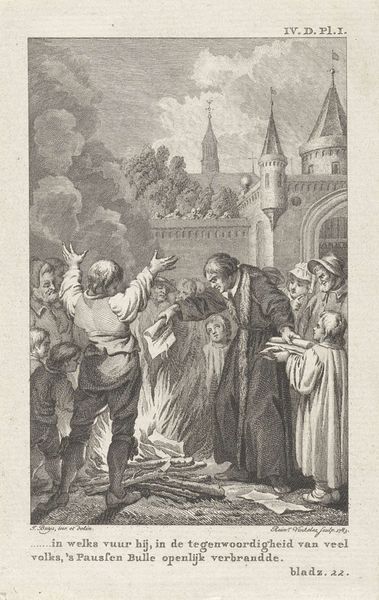
print, engraving
#
narrative-art
# print
#
figuration
#
romanticism
#
history-painting
#
engraving
Dimensions: height 285 mm, width 197 mm
Copyright: Rijks Museum: Open Domain
Editor: So, this engraving, "Radbod laat zich niet dopen, 719," by Johann Wilhelm Kaiser, dating from 1838-1840, depicts a pivotal moment of refusal. There's a lot of tension, and everyone is so expressive, particularly Radbod himself. How do you interpret this scene through a historical lens? Curator: Well, consider this engraving in the context of 19th-century nationalism. These historical paintings, or rather prints derived from them, were hugely popular, shaping public memory. The choice to depict this *specific* moment, Radbod's defiant rejection of baptism, is less about religious truth, and more about the assertion of Dutch identity, specifically focusing on resisting external pressures. What visual cues support that reading? Editor: I guess Radbod is portrayed as very strong and resolute in the face of the clergymen surrounding him, so perhaps Kaiser meant for the audience to empathize with Radbod’s refusal to succumb to what could be interpreted as foreign religious pressures? Curator: Exactly. Romanticism favored the emotional intensity, but it also frequently glorified national heroes and formative historical events. Kaiser strategically uses those Romantic idioms here. Think about who this print was *for* and *how* it was consumed, perhaps disseminated via newspapers and books, influencing how Dutch citizens understood their own history and cultural independence. Do you think this piece fairly represents both sides of the event? Editor: Probably not. It seems biased, celebrating resistance over religious conversion, so that feels very rooted in the social context of the time it was made rather than a straightforward illustration. I'll definitely think more about the political aims that can be hidden in these works! Curator: Precisely! Every historical artwork is also a product of its own time, influencing, and being influenced by, the surrounding societal forces. Remembering this context opens up a whole new level of meaning in visual culture.
Comments
No comments
Be the first to comment and join the conversation on the ultimate creative platform.



